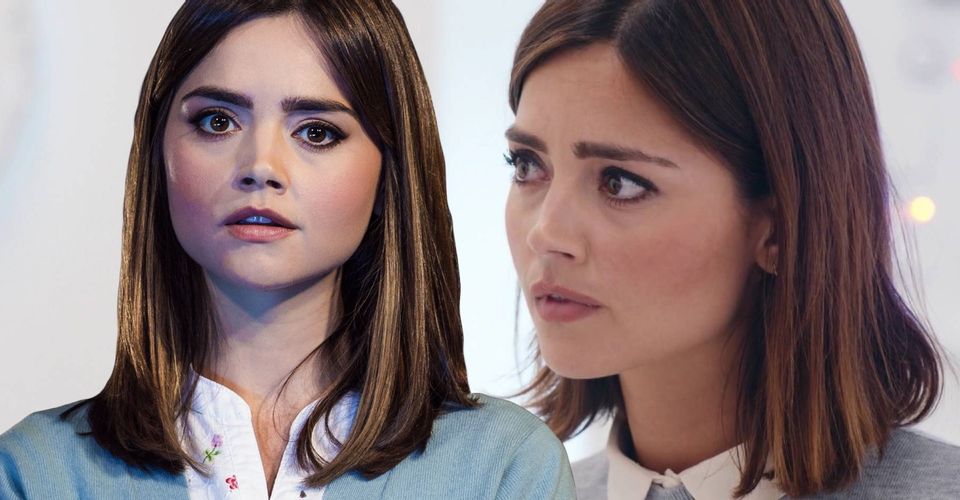Doctor Who: How Clara Became Immortal (& Still Died)

What happened with Clara’s death and immortality in Doctor Who? Taking charge of the BBC science fiction series between seasons 4 and 10, Steven Moffat’s tenure was characterized by twisting, long-term story arcs such as “Silence Will Fall,” The Doctor’s name and the mystery of River Song. Another major thread was The Impossible Girl, introduced with the arrival of Jenna Coleman as the Eleventh Doctor’s new companion, Clara Oswald. The Doctor would find different versions of Clara throughout his timeline, and this was eventually revealed to be due to an incident with the Great Intelligence on Trenzalore.
When Doctor Who closed its Impossible Girl chapter and Matt Smith regenerated into Peter Capaldi, many expected the relationship between Clara and The Doctor to become more conventional, and that assumption proved true until season 9’s “Face The Raven.” Depending on your point of view, this was Clara’s death episode and her farewell to Doctor Who, but in true TARDIS style, it wasn’t. Thanks to The Doctor, Clara came back for the season finale before dying for good. Except, once again, she didn’t. Clara’s story ends with the former companion vorp-ing into the unknown with Ashildr in their American Diner TARDIS.
Clara’s gradual journey to the grave begins simply enough. In “Face The Raven,” Clara’s friend Rigsy is wrongly slapped with an intergalactic death sentence known as a chronolock. Confident that The Doctor and Ashildr, who put the tattoo on Rigsy in the first place, wouldn’t let the boy die, Clara offers to take the chronolock upon herself to buy some more time. This proves to be a foolish move. Although Clara was right in assuming Ashildr wouldn’t have let Rigsy die, the agreement was invalidated when the mark was passed onto Clara. This agreement was made between Ashildr, who wanted to protect her secret Trap Street refuge, and the Time Lords, who used Ashildr to trap The Doctor because they needed to find out what he knew about the prophecy of the Hybrid.

Naturally, The Doctor was furious that the Time Lords had not only had a hand in Clara’s death, but also imprisoned him for billions of years as a means of interrogation. He returned to Gallifrey and, after booting Rassilon off the planet, lied to the Time Lords by claiming he needed Clara to properly decode the prophecy. Following The Doctor’s request, Gallifreyan technology is used to pluck Clara out of her time stream during her final heartbeat on Trap Street. Clara rejoins The Doctor with her body in stasis and they escape to the end of the universe together.
The Doctor believes that leaving Gallifrey will restart Clara’s heart and remove the chronolock, essentially bringing her back to life as if nothing ever happened. To keep Clara from the Time Lords, The Doctor then planned to wipe her memory and leave her somewhere to enjoy a peaceful life. Unfortunately, The Doctor’s assumption is wrong, and Clara’s heart doesn’t restart. With Ashildr’s help, The Doctor and Clara realize that their friendship has become dangerous after the hero abandoned his long-held moral code to revive her. The Time Lord Victorious all over again. One of them needs to forget about the other, and it’s The Doctor whose memory is wiped by Clara, ensuring there will be no more reckless attempts to save her.
After dropping off The Doctor somewhere safe, Clara is left with Ashildr in the stolen TARDIS. Still without a heartbeat, Clara realizes she’s technically immortal because her death has already been written, and the duo resolve to go off adventuring on their own before Clara has to return to the Time Lords and face her own time stream as intended.
The Doctor initially wanted to wipe Clara’s memory because the Time Lords could track her through them. Since Gallifrey probably wouldn’t want an undead Clara rampaging through the universe with Ashildr, it can perhaps be assumed that wiping The Doctor’s memories of Clara has the same effect. But why didn’t Clara’s heart restart as The Doctor thought it would? This is likely meant as a sign of The Doctor’s desperation and arrogance. Clara’s death becomes a fixed point in time and The Doctor’s instinct is, as usual, to run away, but even the end of the universe isn’t far enough to change that fixed event – something The Doctor would probably have realized in his right mind. Some might wonder why the chronolock raven itself wouldn’t come after Clara, since the Quantum Shade is supposedly inescapable. Presumably, the raven (being unrestricted by time) is satisfied when Clara eventually does return to her own time stream to die as intended, therefore it doesn’t disturb her Ashildr adventures.
Doctor Who returns with “Revelation of the Daleks” this Christmas on BBC.
About The Author


















